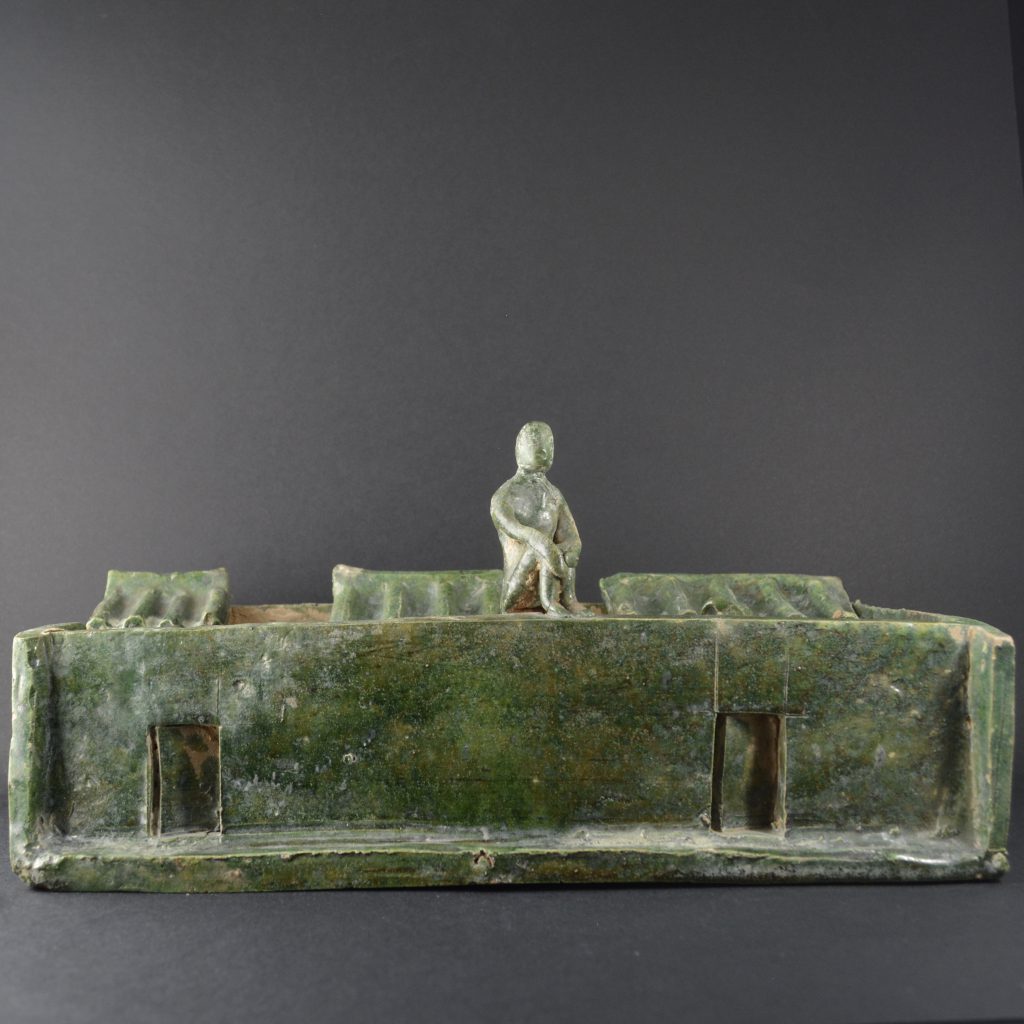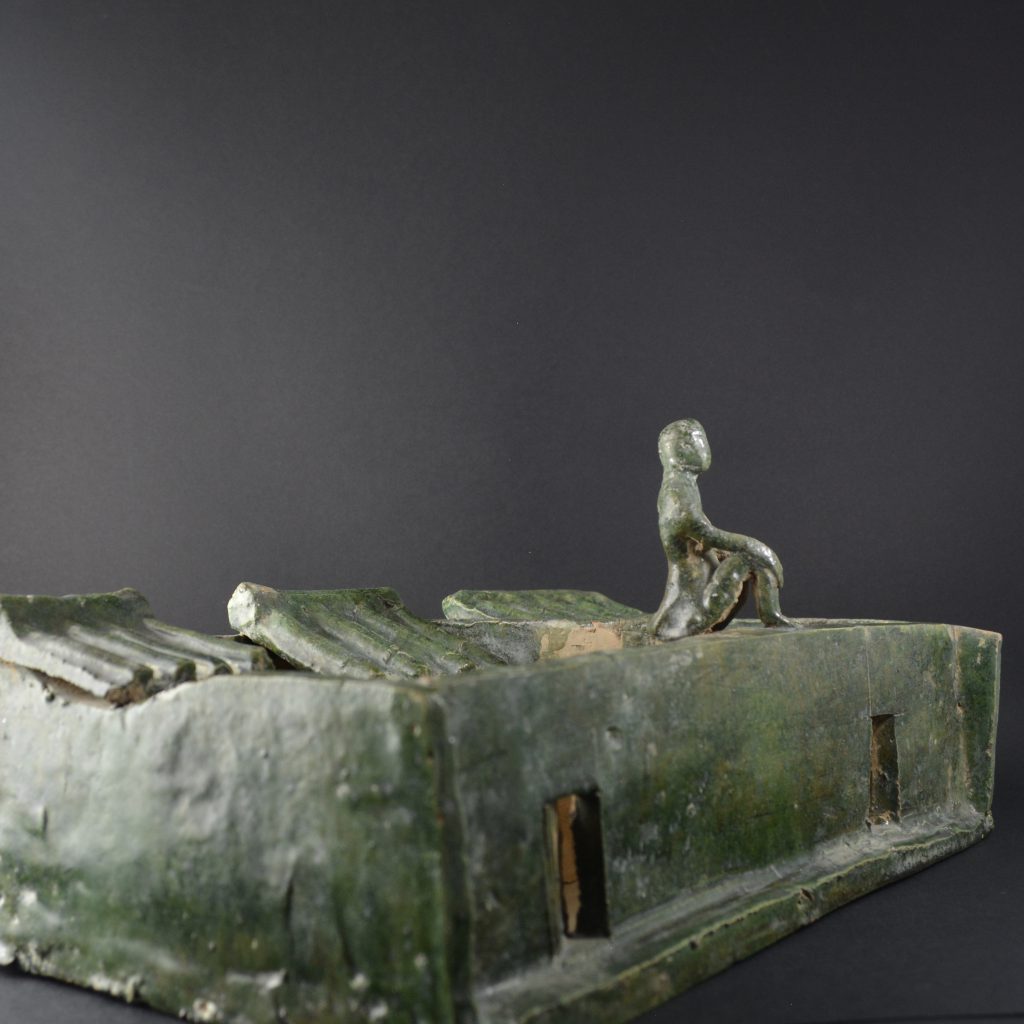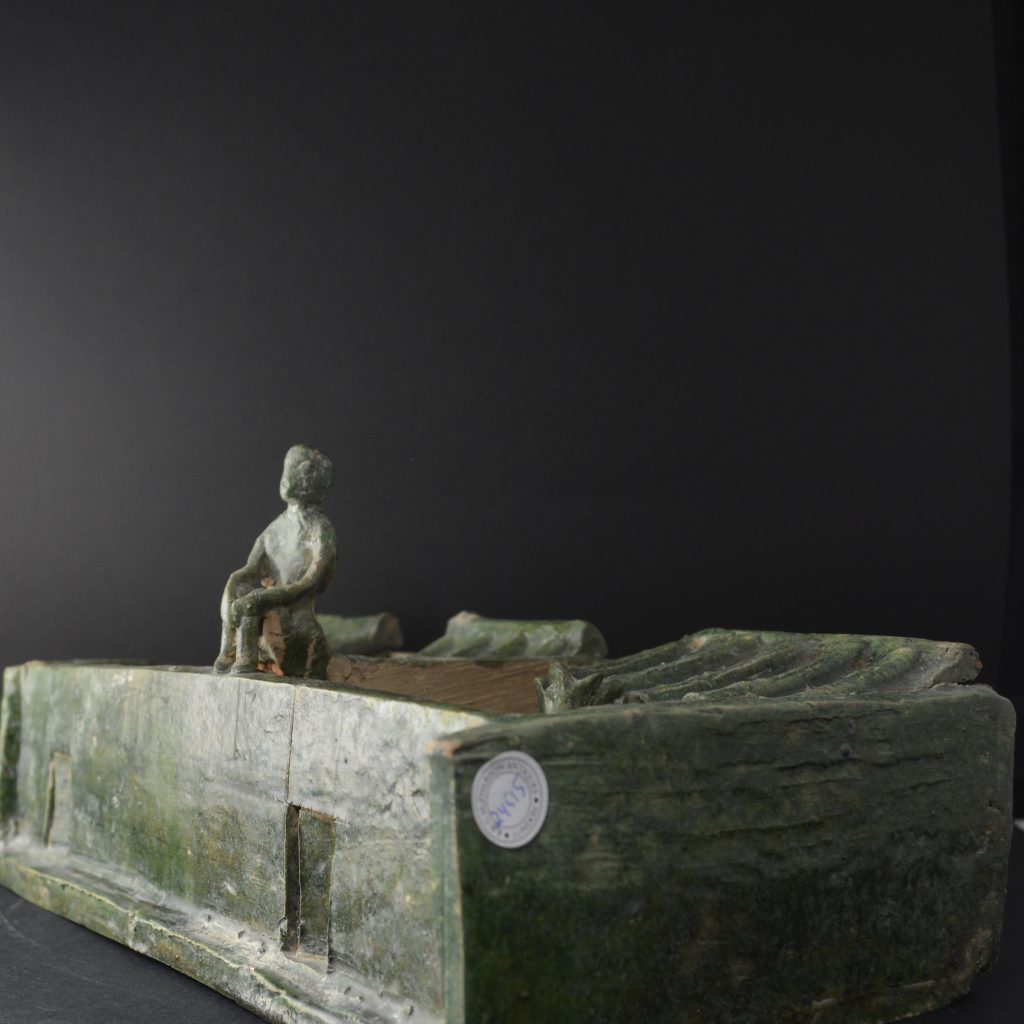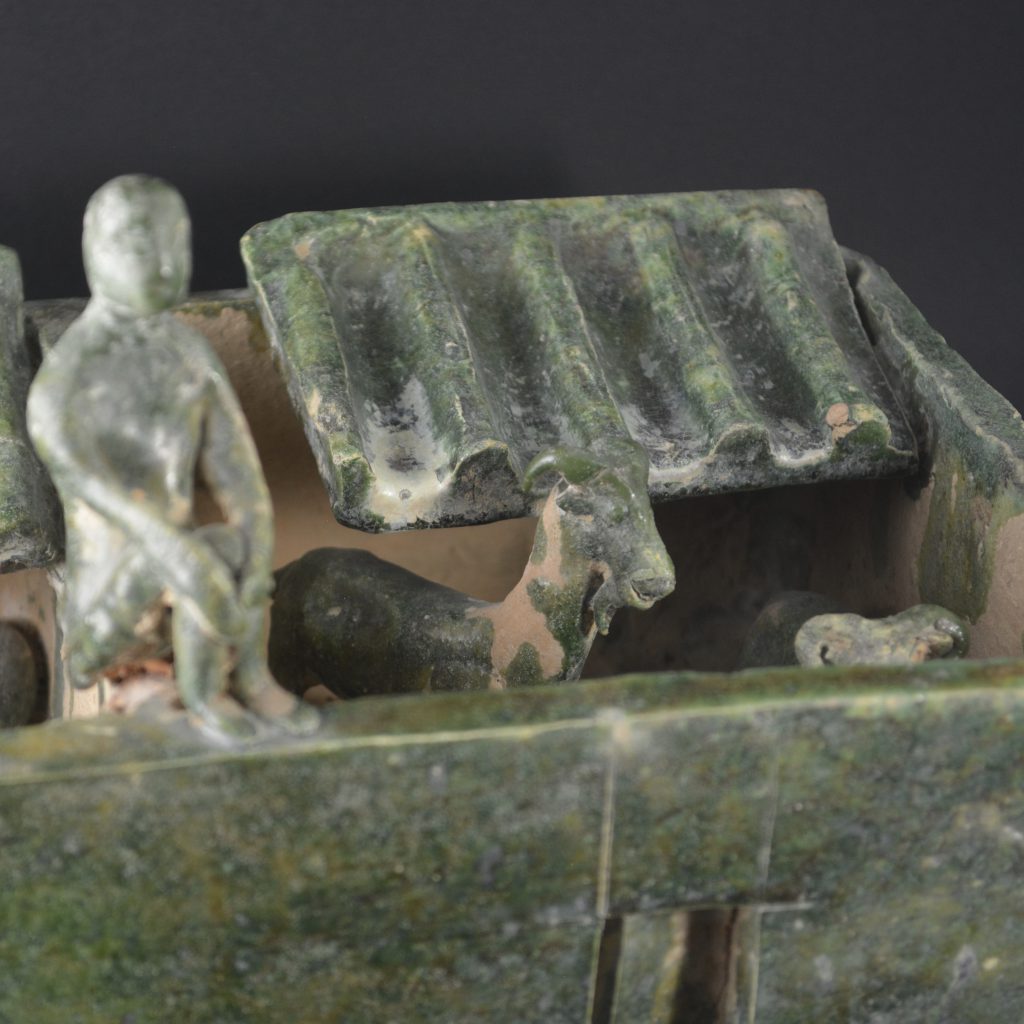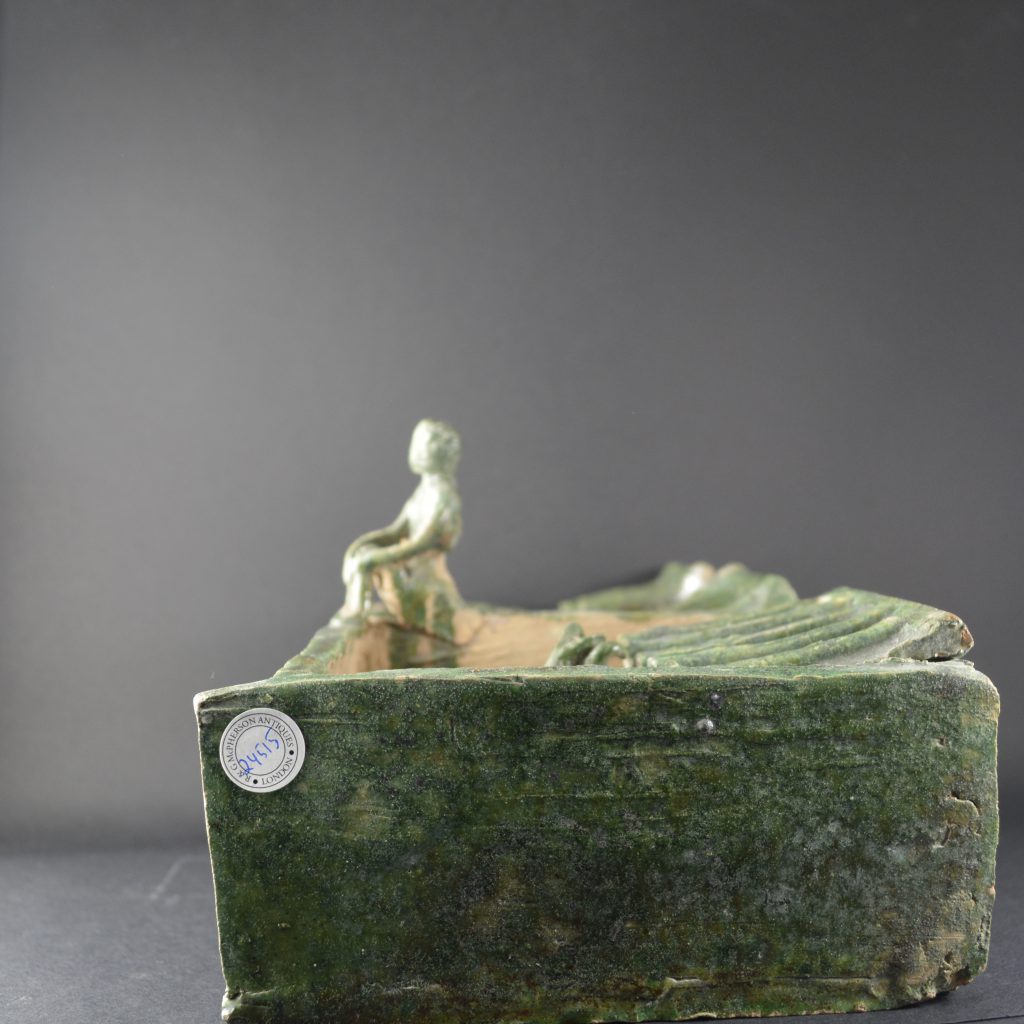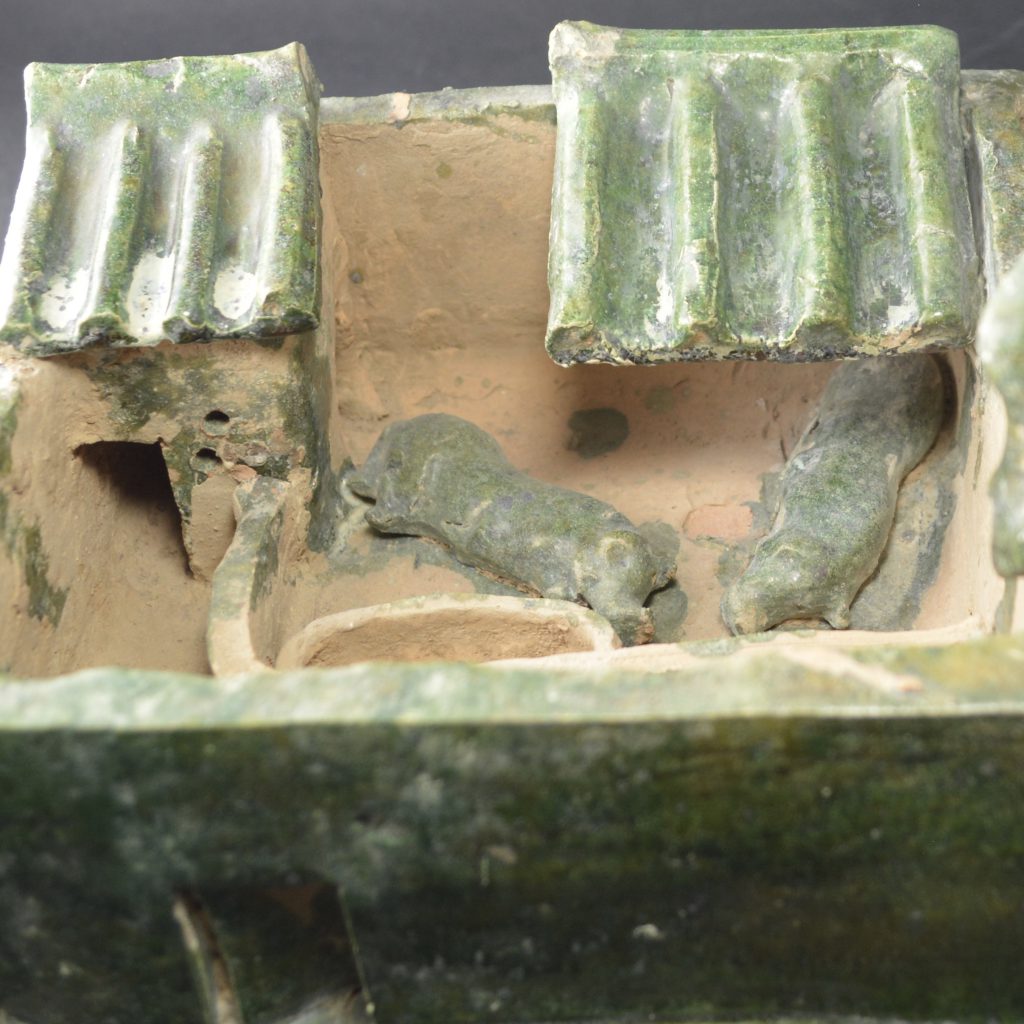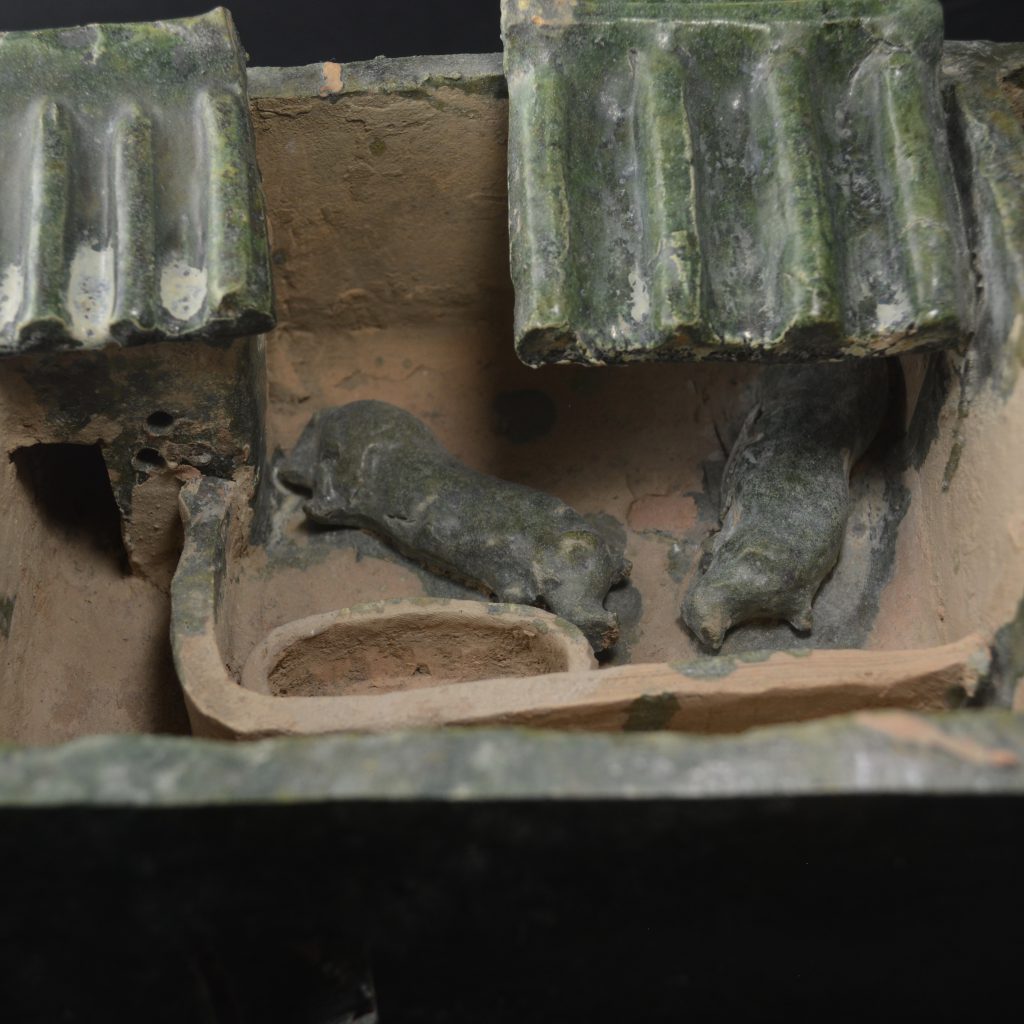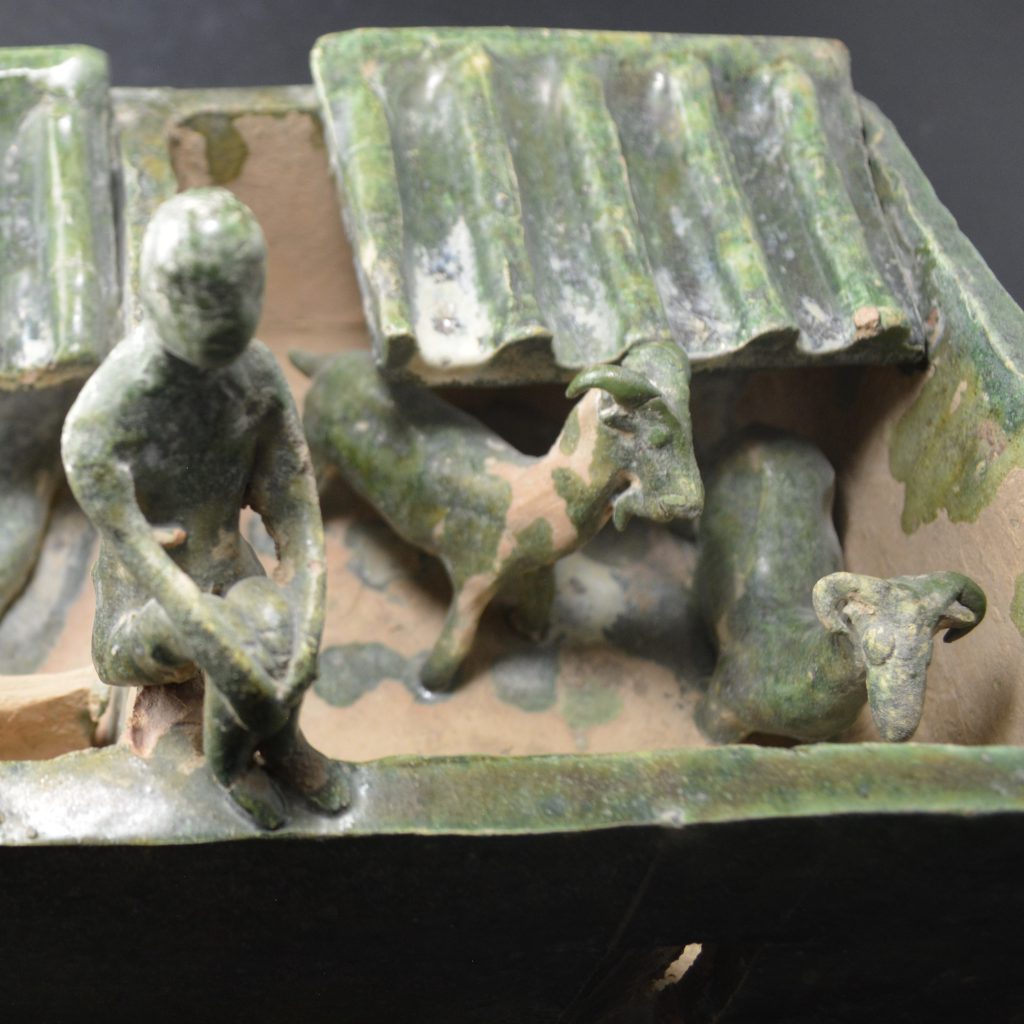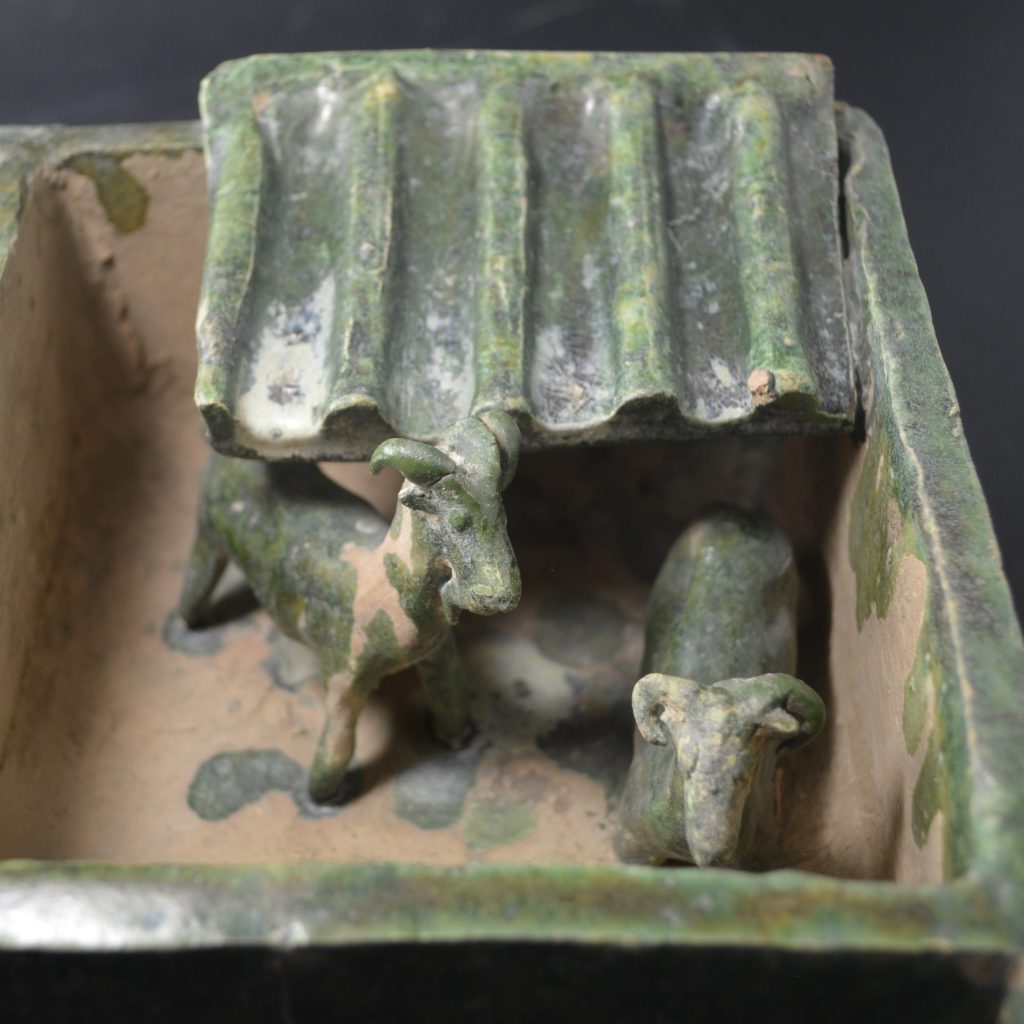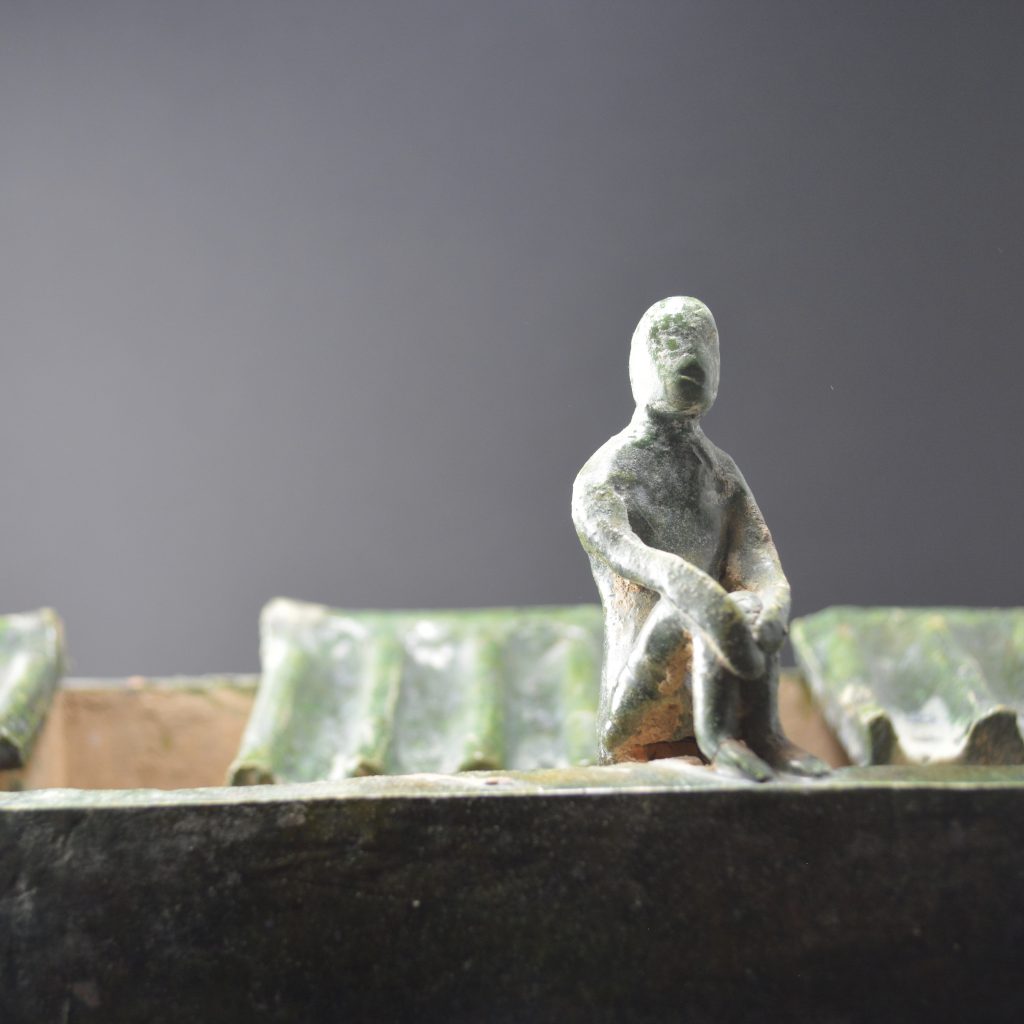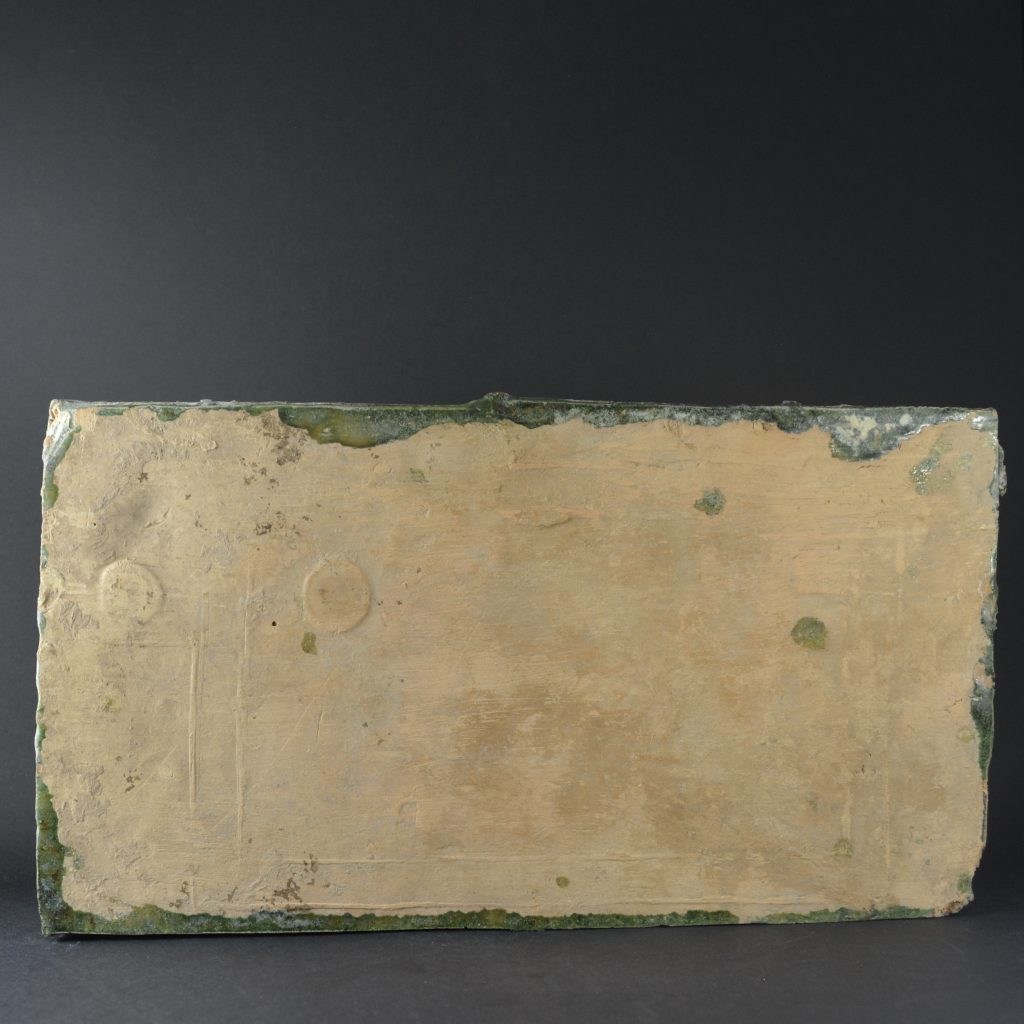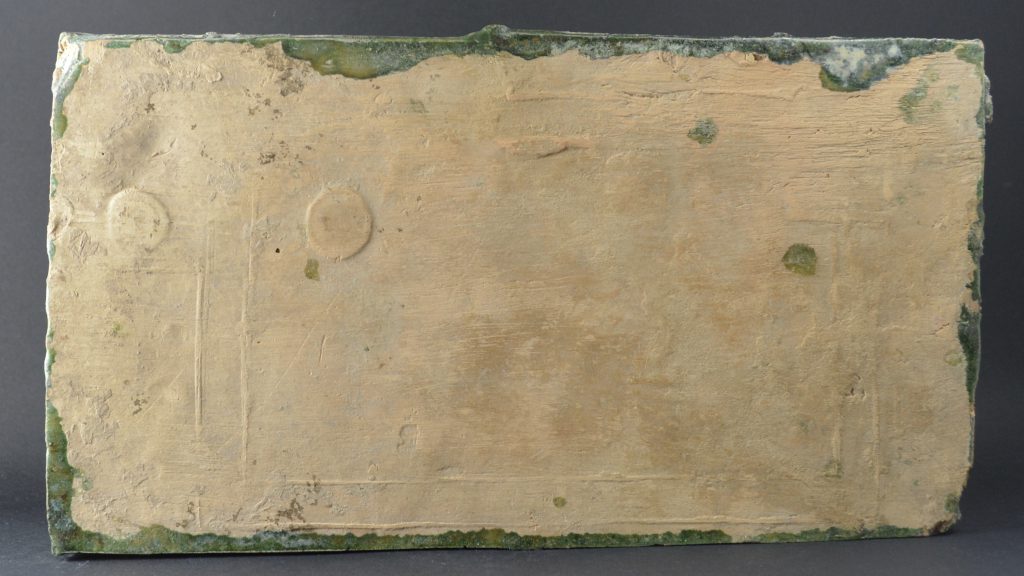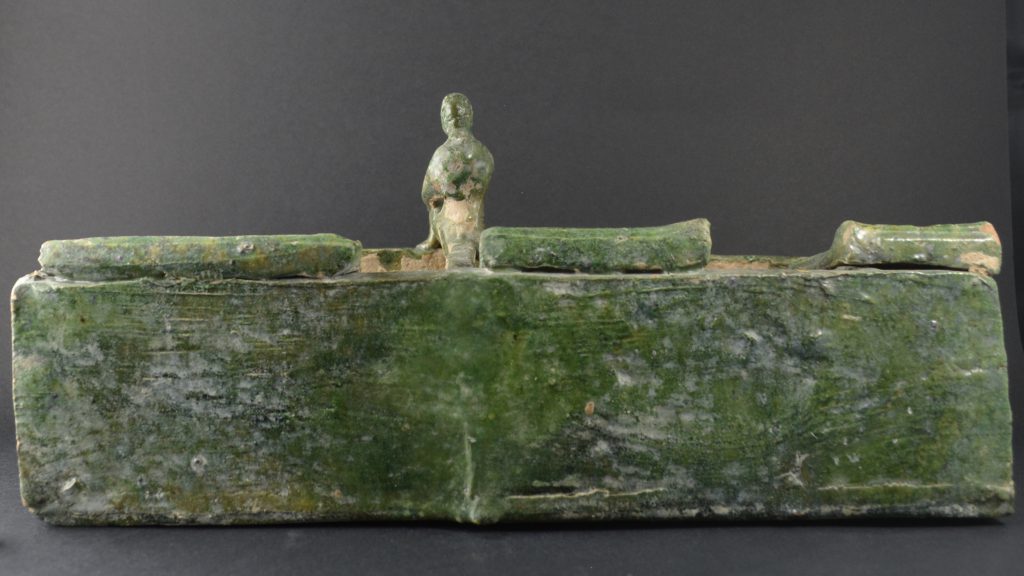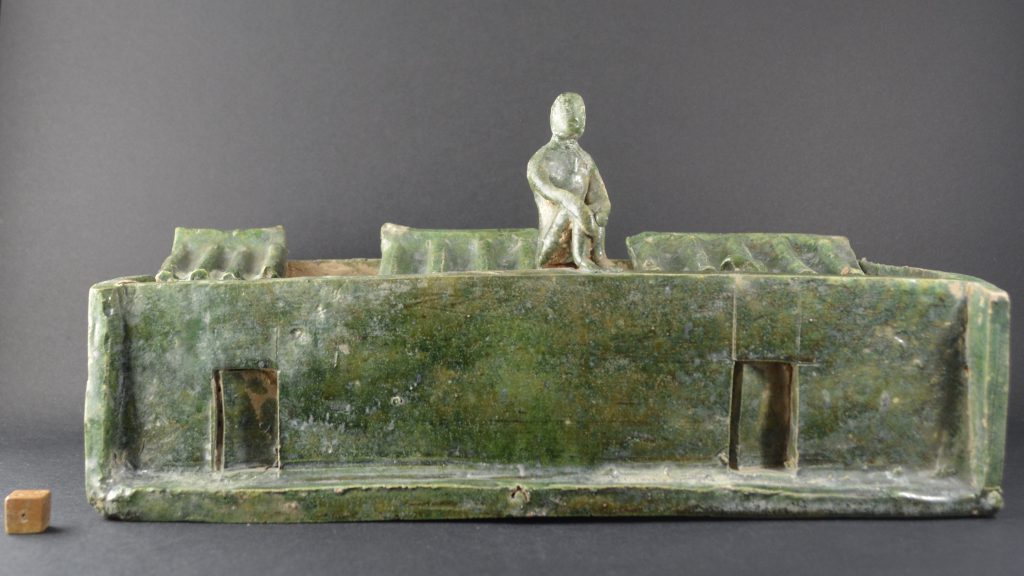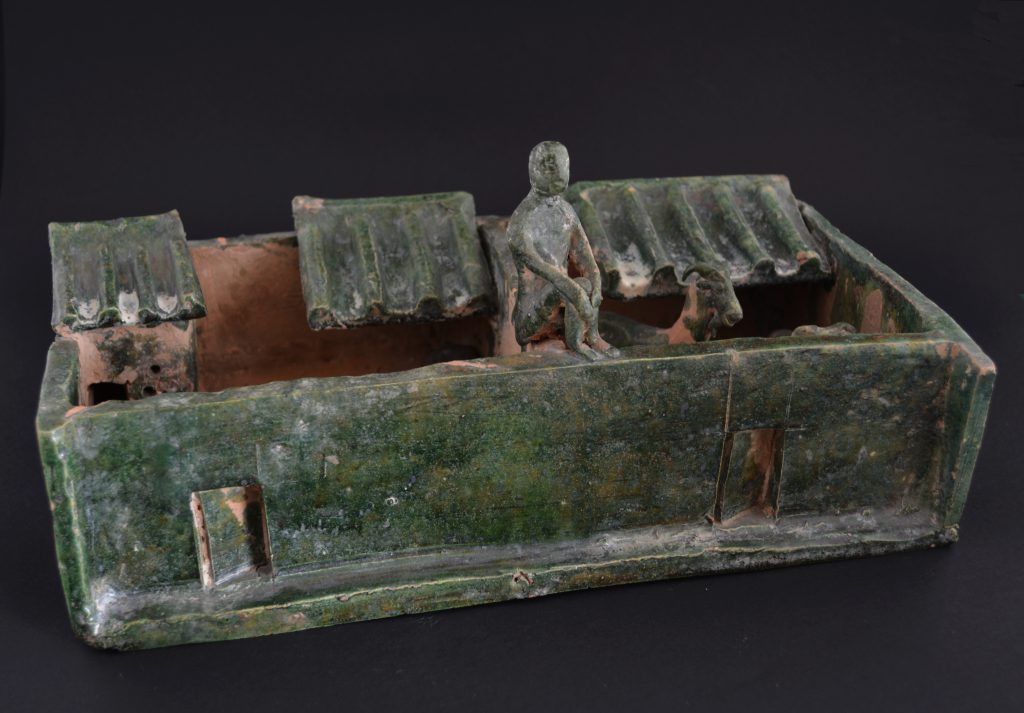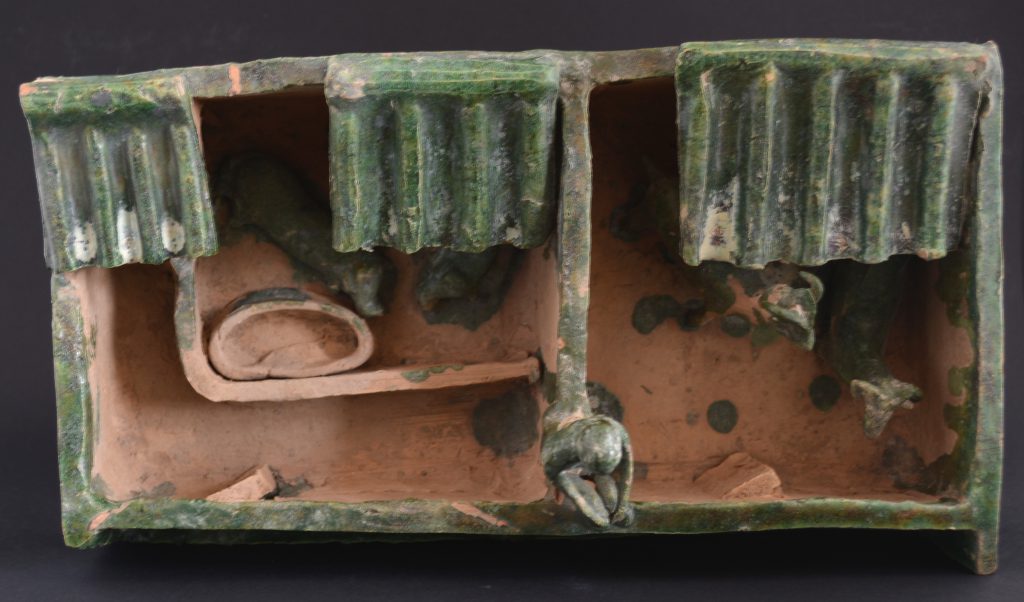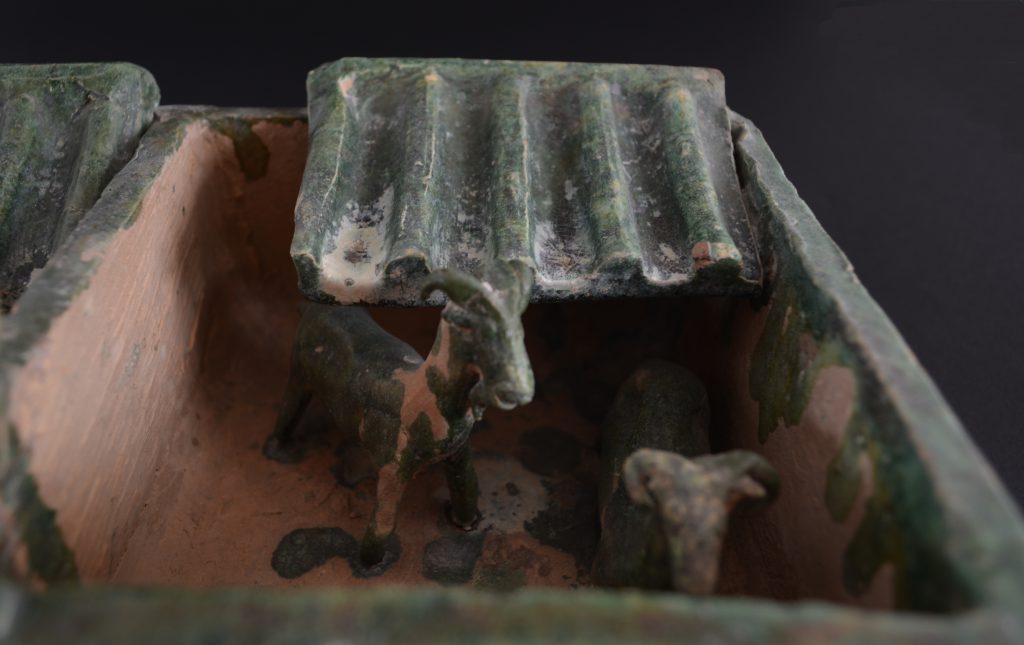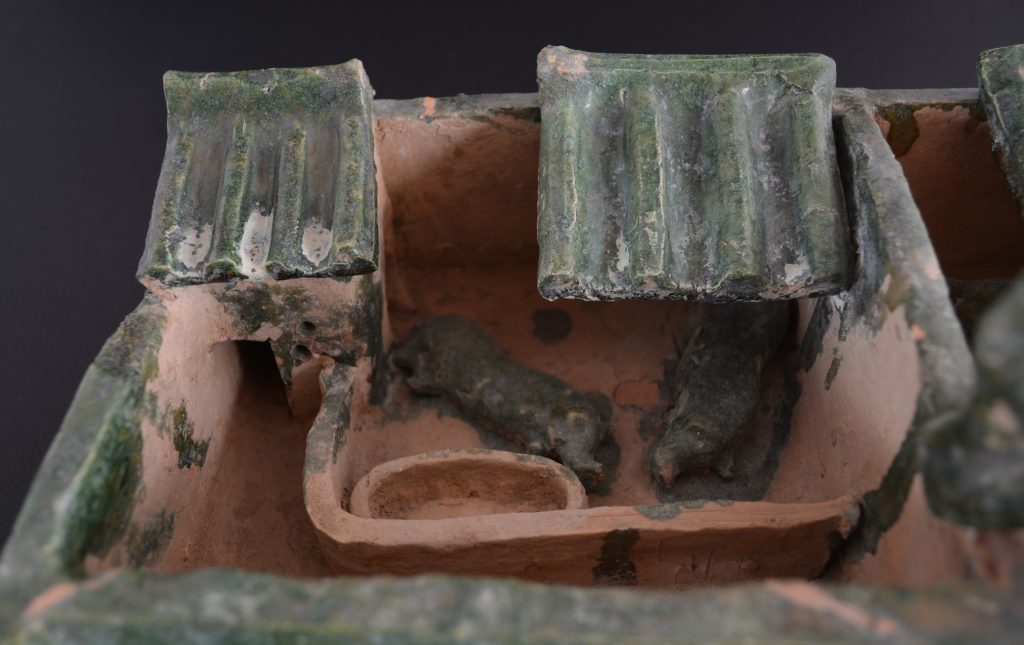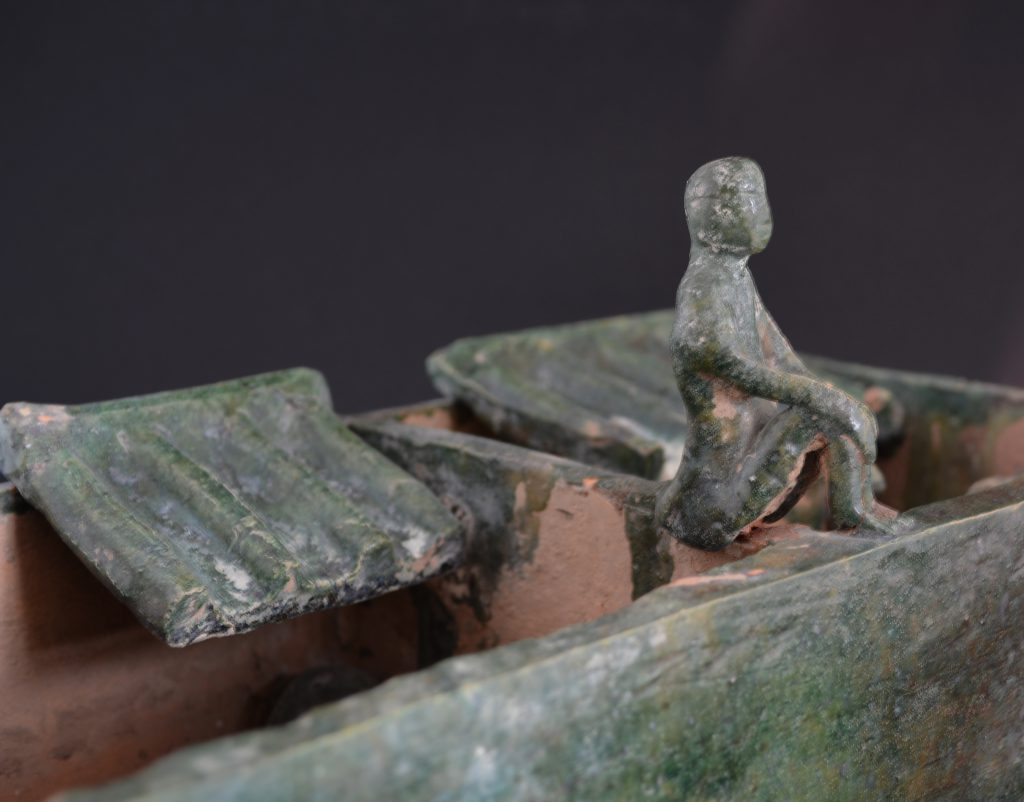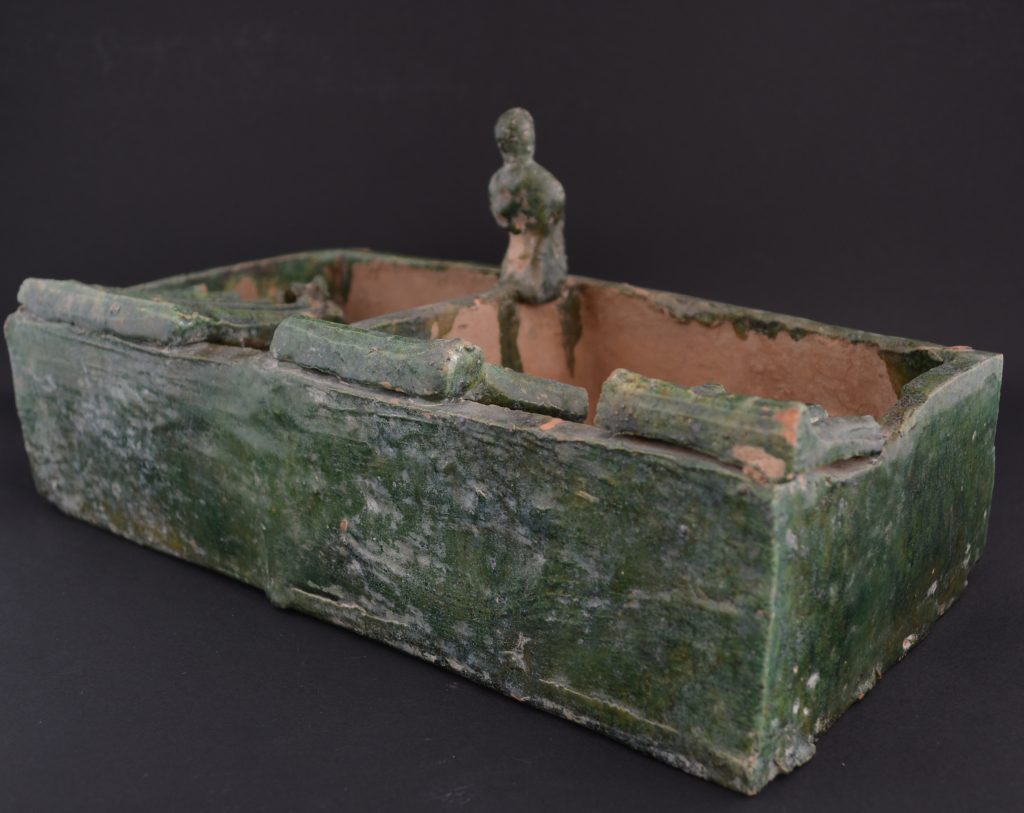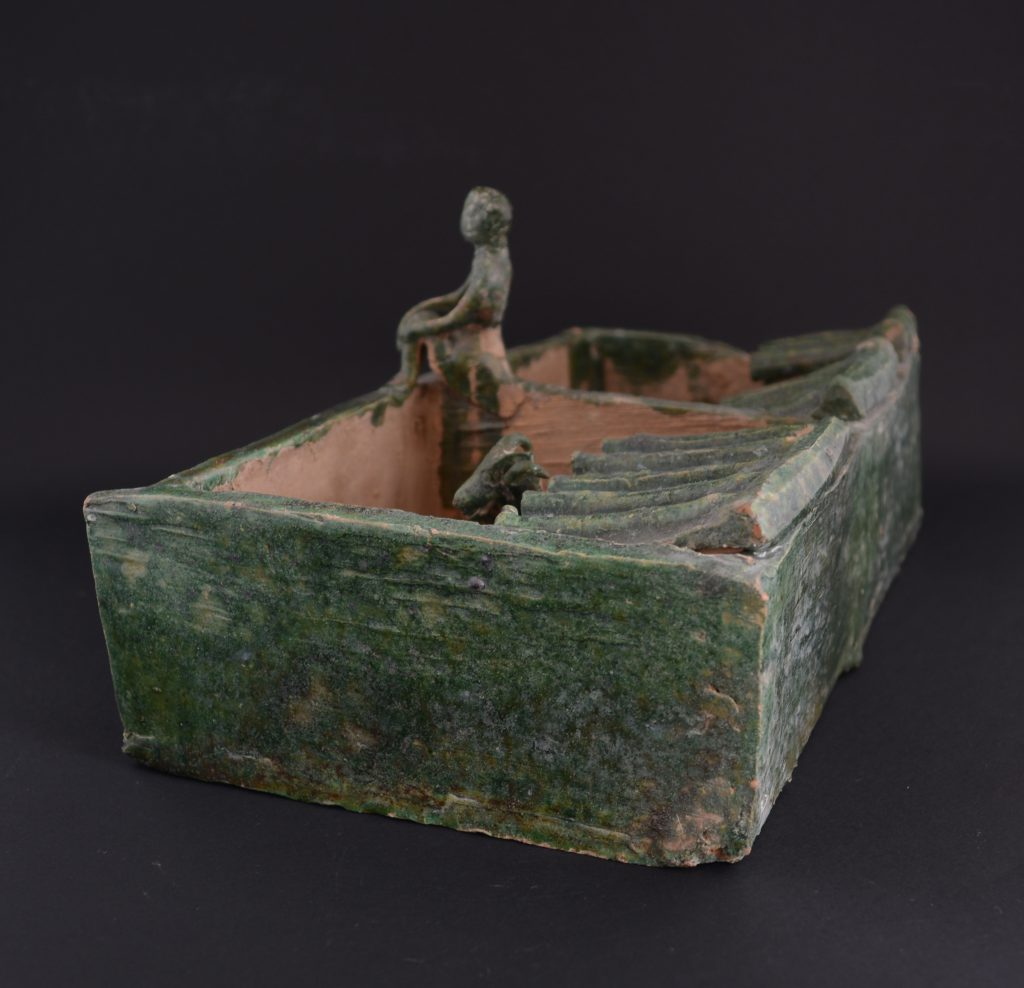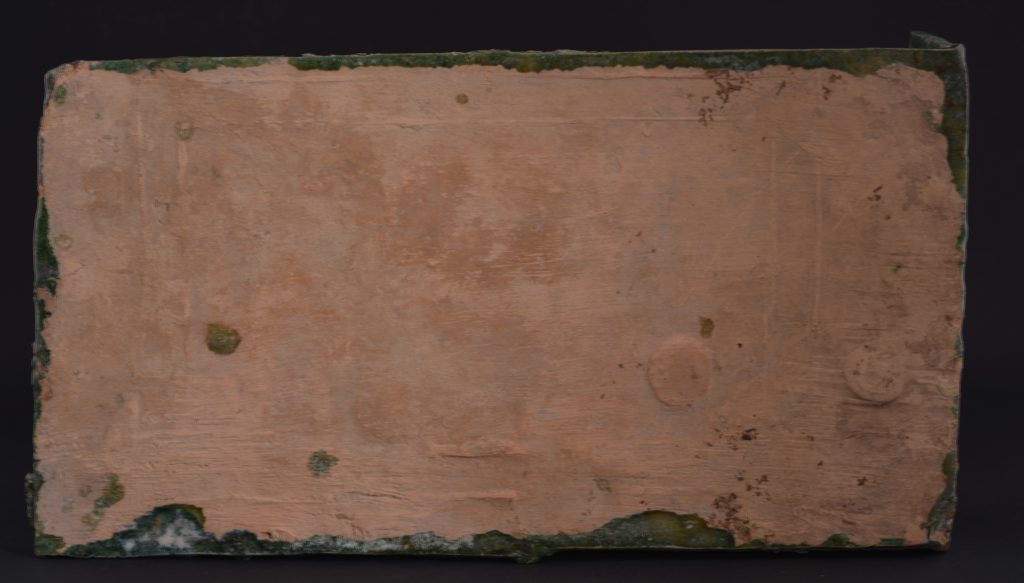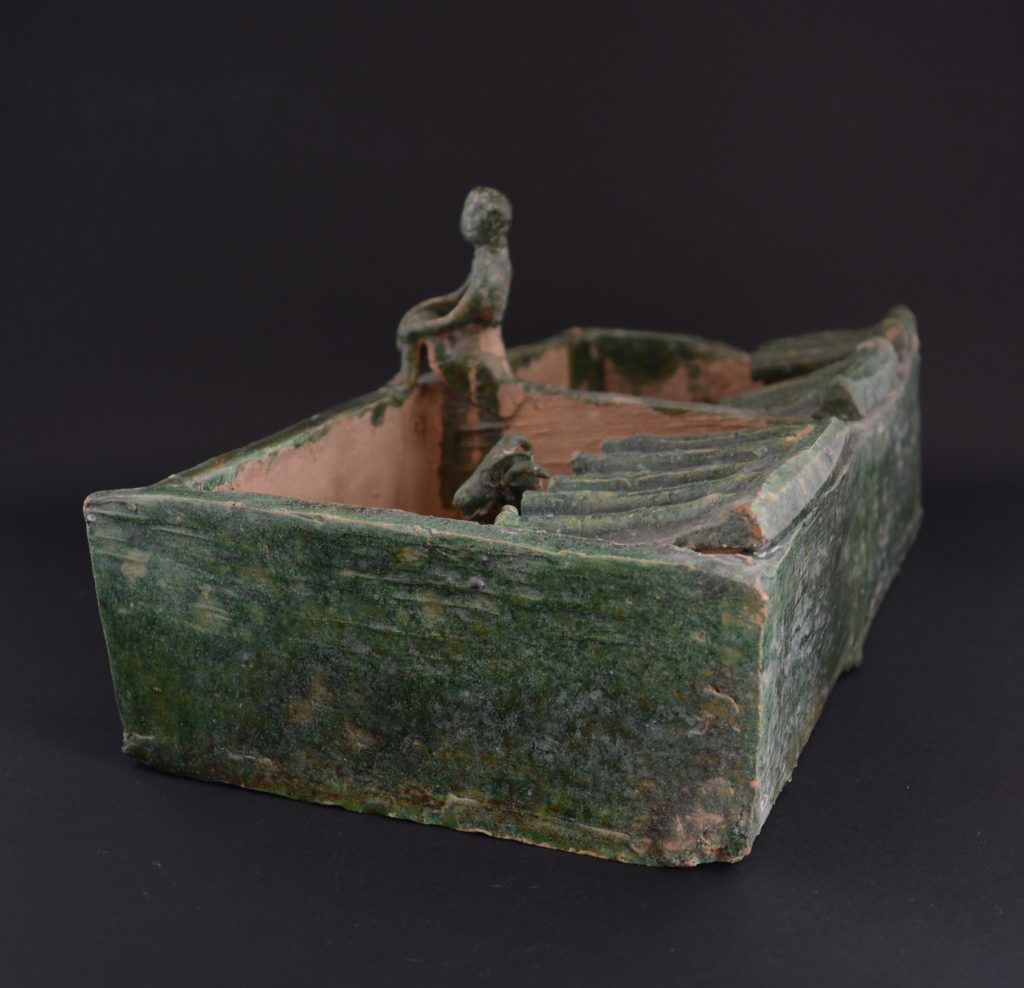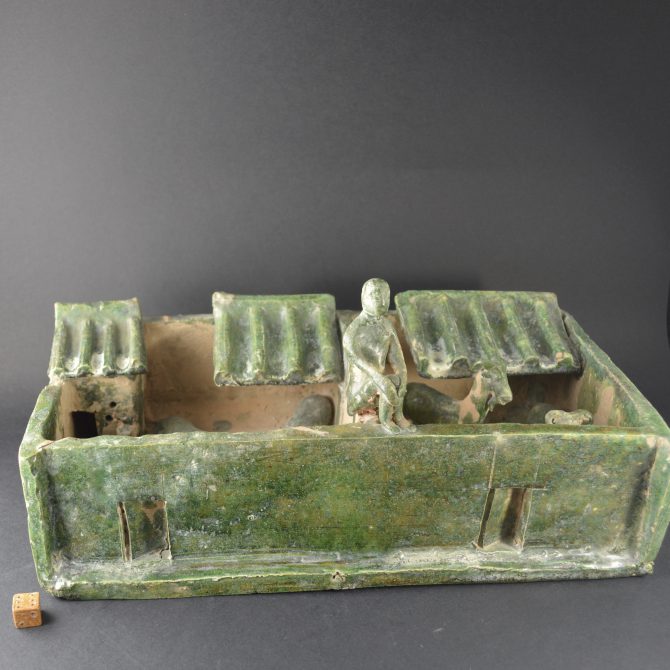
Eastern Han Mingqi Pottery Farm
An Eastern Han Pottery model of a farmyard with individual sheds for the animals, Eastern Han Period 25-220. The green lead-glazed red pottery model shows three covered animal sheds with the animals including a pig and a ram in a walled enclosure. At the front is a man with a bow guarding the livestock.
SOLD
- Condition
- Broken into three pieces and very well restored, the mans head and the goats horns also restored.
- Size
- Width : 31.7 cm (12 1/4 inches)
- Provenance
- The Collection of Dr. Alain Faure.
- Stock number
- 24515
Information
Farming started some 11 thousand years ago. Granaries were important to early settled communities throughout the world, they marked a social change between those who lived hand-to-mouth and those who had enough to sustain themselves over different seasons or even years. Having more than you needed for that moment also gave way to the possibility of trade. They were a symbol of stability, wealth and therefore power, so it is perhaps unsurprising that granaries were an important part of Chinese Mingqi ceramics, ceramics models made to be buried with the dead for use in the next world.
Mingqi Pottery :
The term Mingqi denotes items made exclusively for the tomb, these objects are sometimes fully functional, where as others are made as models to represent functional or spiritual objects. Most Han Mingqi Pottery consists of copies of bronze or lacquer vessels or are models of architecture forms, figures or animals. Food was an important element of Han burials, as with ancient Egypt, foodstuffs were believed to provide sustenance for the next life. Richer tombs were generously supplied with raw agricultural products.
